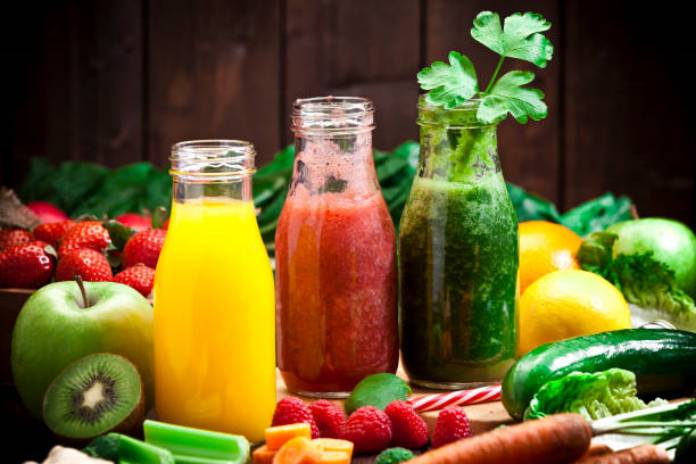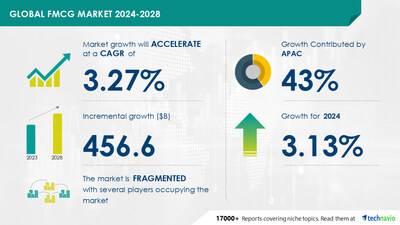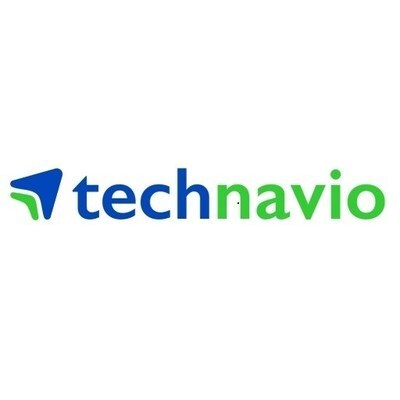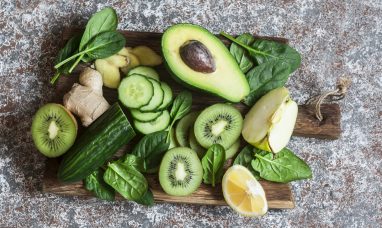NEW YORK, Sept. 13, 2024 /PRNewswire/ — Report on how AI is redefining market landscape- The global fmcg market size is estimated to grow by USD 456.6 billion from 2024-2028, according to Technavio. The market is estimated to grow at a CAGR of 3.27% during the forecast period. Growing preference for e-commerce online distribution is driving market growth, with a trend towards rising consumption of ready-to-eat food products. However, lack of proper infrastructure in emerging economies poses a challenge. Key market players include Anheuser Busch InBev SA NV, Dabur India Ltd., Heineken NV, ITC Ltd., JBS SA, Johnson and Johnson Services Inc., Kellogg Co., Keurig Dr Pepper Inc., Kimberly Clark Corp., LOreal SA, Mondelez International Inc., Nestle SA, Patanjali Ayurved Ltd., PepsiCo Inc., Tata Sons Pvt. Ltd., The Coca Cola Co., The Kraft Heinz Co., The Procter and Gamble Co., The Wadia Group, and Unilever PLC.
Key insights into market evolution with AI-powered analysis. Explore trends, segmentation, and growth drivers- View the snapshot of this report
|
Fmcg Market Scope |
|
|
Report Coverage |
Details |
|
Base year |
2023 |
|
Historic period |
2018 – 2022 |
|
Forecast period |
2024-2028 |
|
Growth momentum & CAGR |
Accelerate at a CAGR of 3.27% |
|
Market growth 2024-2028 |
USD 456.6 billion |
|
Market structure |
Fragmented |
|
YoY growth 2022-2023 (%) |
3.13 |
|
Regional analysis |
APAC, North America, Europe, Middle East and Africa, and South America |
|
Performing market contribution |
APAC at 43% |
|
Key countries |
China, US, India, Russia, and Germany |
|
Key companies profiled |
Anheuser Busch InBev SA NV, Dabur India Ltd., Heineken NV, ITC Ltd., JBS SA, Johnson and Johnson Services Inc., Kellogg Co., Keurig Dr Pepper Inc., Kimberly Clark Corp., LOreal SA, Mondelez International Inc., Nestle SA, Patanjali Ayurved Ltd., PepsiCo Inc., Tata Sons Pvt. Ltd., The Coca Cola Co., The Kraft Heinz Co., The Procter and Gamble Co., The Wadia Group, and Unilever PLC |
Market Driver
The ready-to-cook and ready-to-eat food products segment in the FMCG market is experiencing significant growth due to the increasing number of dual-income households and hectic lifestyles. Convenience and time-saving features are key drivers of demand for these products. According to a 2022 report by Standard Process Inc., processed foods accounted for approximately 70% of the American diet. In 2020, the pandemic led to a growth in demand for ready-to-eat food products, as indicated by a 17% increase in sales for India’s Blinkit online grocery store in the ready-to-eat category, a 31% increase in readymade meals and mixes, and a 41% increase in frozen food sales. This shift in consumer behavior is expected to significantly boost the global FMCG market during the forecast period.
FMCG market trends indicate a significant shift towards urban, semi-urban, and rural areas. Online purchasing is on the rise, with e-commerce platforms and online retail stores gaining popularity. Consumer electronics, pet care, health care, food and beverages, and lifestyle products are top categories. Urban consumers prefer supermarkets and hypermarkets, while rural areas lean towards offline retail stores, convenience stores, and local shops. E-commerce platforms, third-party websites, and company-owned websites cater to the increasing number of smartphone users. Discounts, subscription services, and mobile apps are driving sales. Lifestyle changes, health-consciousness, and demand for green alternatives, natural products, and plant-based options are influencing consumer behavior. Modern retail formats like food malls are also gaining traction. Price wars among FMCG networks and counterfeit brands pose challenges. Overall, the FMCG market is witnessing a transformation, with a focus on convenience, affordability, and quality.
Request Sample of our comprehensive report now to stay ahead in the AI-driven market evolution!
Market Challenges
- The FMCG market in emerging economies, particularly in Asia Pacific (APAC), is experiencing significant growth due to improving economic conditions, urbanization, and increasing health consciousness. This growth is further fueled by the expanding food processing industries in the region. However, challenges persist in providing adequate infrastructure for storing and manufacturing food processing ingredients, such as preservatives, emulsifiers, and enzymes. Proper handling and temperature control are essential to maintain their original properties and prevent contamination. The lack of advanced technologies in the region for producing these ingredients increases costs and hinders market growth. Despite these hurdles, the FMCG market in APAC is expected to continue expanding during the forecast period.
- The FMCG market faces several challenges in today’s business landscape. With the rise of food malls and third-party websites, traditional retail channels like supermarkets and hypermarkets, grocery stores, and specialty stores face intense competition. Smartphone users increasingly prefer online shopping for convenience and discounts. Health care, food and beverages, and lifestyle changes drive demand for cleansing products, dual-income families, and health-consciousness. In-house production versus contract-based production, subscription services, and mobile apps are shaping modern retail formats. Price wars among FMCG networks and the proliferation of counterfeit brands pose threats. Raw materials prices, inflation, and economic progress also impact the industry. Consumers seek sustainable, natural, plant-based options, skincare, beauty products, and oral hygiene products. Sustainable and green alternatives are gaining popularity. Adapting to these trends and challenges is crucial for FMCG businesses.
Discover how AI is revolutionizing market trends- Get your access now!
Segment Overview
This fmcg market report extensively covers market segmentation by
- Type
- 1.1 Food and beverage
- 1.2 Personal and beauty care
- 1.3 Health and hygiene care
- 1.4 Home care
- Geography
- 2.1 APAC
- 2.2 North America
- 2.3 Europe
- 2.4 Middle East and Africa
- 2.5 South America
1.1 Food and beverage- The food and beverage segment experienced growth in the FMCG market during 2023, driven by rising demand for packaged and processed foods in both developed and emerging economies. Improved economic conditions and increased disposable income have fueled this trend. Manufacturers of processed foods are focusing on product differentiation to stay competitive. The popularity of packaged and frozen foods among urban populations, due to changing dietary habits and convenience, is a significant factor. Long shelf life is a key selling point for frozen food makers, leading to innovation in preservation techniques. The expanding global middle class and growing number of working women are further driving demand for these products.
Download a Sample of our comprehensive report today to discover how AI-driven innovations are reshaping competitive dynamics
Research Analysis
The Fast-Moving Consumer Goods (FMCG) market encompasses a wide range of products including Food and Beverages, Healthcare, Toiletries, Oral Hygiene Products, Detergents, Cosmetics, and Home Care. With changing lifestyles, there is a growing demand for Packaged Foods and Convenience Items catering to Middle-Class Populations and Dual-Income Families. Health Care and Lifestyle Changes have become major drivers in the market, leading to an increase in demand for Cleansing Products, Healthcare Items, and Green Alternatives. The rise of Online Shopping and E-commerce platforms has made these products more accessible than ever before. However, the market also faces challenges such as Counterfeit Brands and FMCG networks ensuring product authenticity. As consumers become more health-conscious, there is a growing preference for natural and organic products. Overall, the FMCG market continues to evolve, presenting both opportunities and challenges for businesses.
Market Research Overview
The FMCG (Fast-Moving Consumer Goods) market encompasses a wide range of products including Food and Beverages, Healthcare, Toiletries, Oral Hygiene Products, Detergents, Cosmetics, and more. The market is driven by various factors such as changing lifestyles, economic progress, and the growing middle-class population. Urban sectors are leading the way in FMCG consumption, but the semi-urban and rural areas are also seeing significant growth. Inflation and raw materials prices pose challenges for FMCG companies. Counterfeiting of products is a major concern, with consumers increasingly turning to sustainable and authentic shopping options. E-commerce and online retail platforms are gaining popularity, especially among urban consumers and smartphone users. The FMCG market includes various retail channels such as supermarkets/hypermarkets, grocery stores, specialty stores, convenience stores, food malls, third-party websites, and company-owned websites. Price wars and discounts are common strategies used by companies to attract consumers. Lifestyle changes, health-consciousness, and the availability of green alternatives, natural products, and plant-based options are influencing consumer preferences. The market also includes categories like pet care, home care, and cleansing products. Dual-income families and the rise of subscription services and mobile apps are also shaping the FMCG landscape.
Table of Contents:
1 Executive Summary
2 Market Landscape
3 Market Sizing
4 Historic Market Size
5 Five Forces Analysis
6 Market Segmentation
- Type
- Food And Beverage
- Personal And Beauty Care
- Health And Hygiene Care
- Home Care
- Geography
- APAC
- North America
- Europe
- Middle East And Africa
- South America
7 Customer Landscape
8 Geographic Landscape
9 Drivers, Challenges, and Trends
10 Company Landscape
11 Company Analysis
12 Appendix
About Technavio
Technavio is a leading global technology research and advisory company. Their research and analysis focuses on emerging market trends and provides actionable insights to help businesses identify market opportunities and develop effective strategies to optimize their market positions.
With over 500 specialized analysts, Technavio’s report library consists of more than 17,000 reports and counting, covering 800 technologies, spanning across 50 countries. Their client base consists of enterprises of all sizes, including more than 100 Fortune 500 companies. This growing client base relies on Technavio’s comprehensive coverage, extensive research, and actionable market insights to identify opportunities in existing and potential markets and assess their competitive positions within changing market scenarios.
Contacts
Technavio Research
Jesse Maida
Media & Marketing Executive
US: +1 844 364 1100
UK: +44 203 893 3200
Email: [email protected]
Website: www.technavio.com/
![]() View original content to download multimedia:https://www.prnewswire.com/news-releases/fmcg-market-to-expand-by-usd-456-6b-2024-2028-with-e-commerce-growth-ais-role-in-shaping-market-trends–technavio-report-302247651.html
View original content to download multimedia:https://www.prnewswire.com/news-releases/fmcg-market-to-expand-by-usd-456-6b-2024-2028-with-e-commerce-growth-ais-role-in-shaping-market-trends–technavio-report-302247651.html
SOURCE Technavio

Featured Image: I stock @ fcafotodigital











